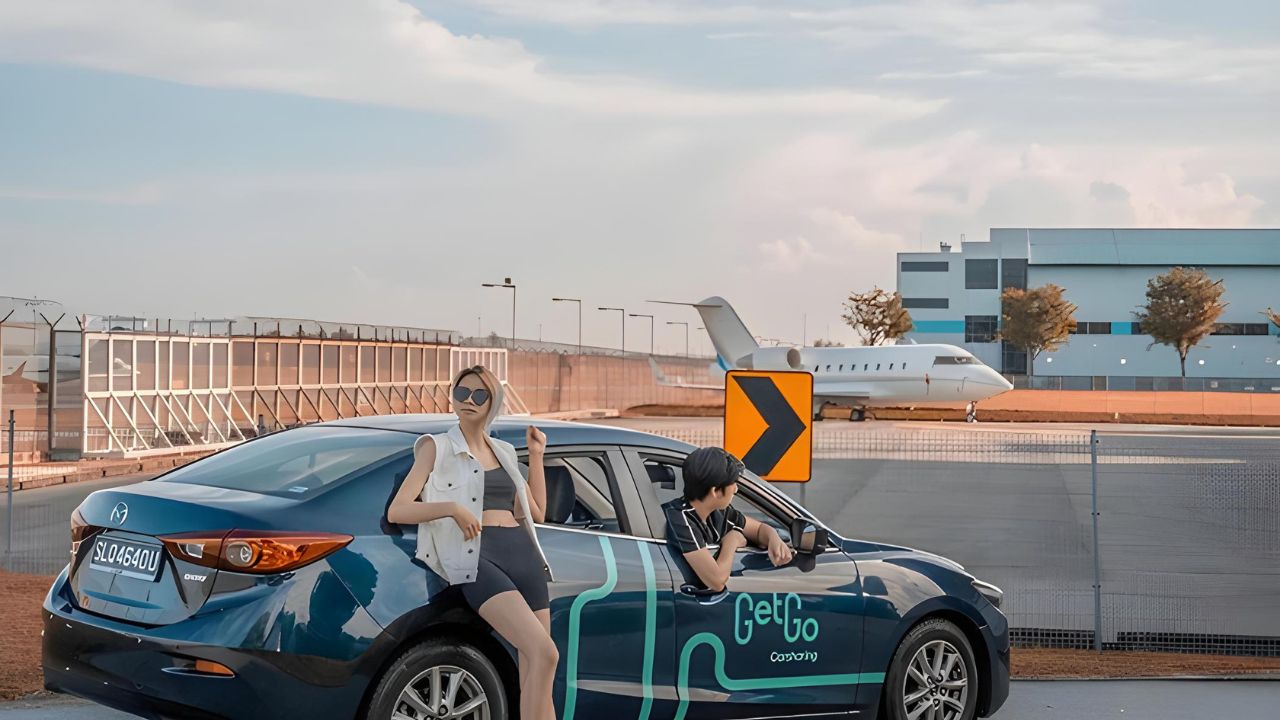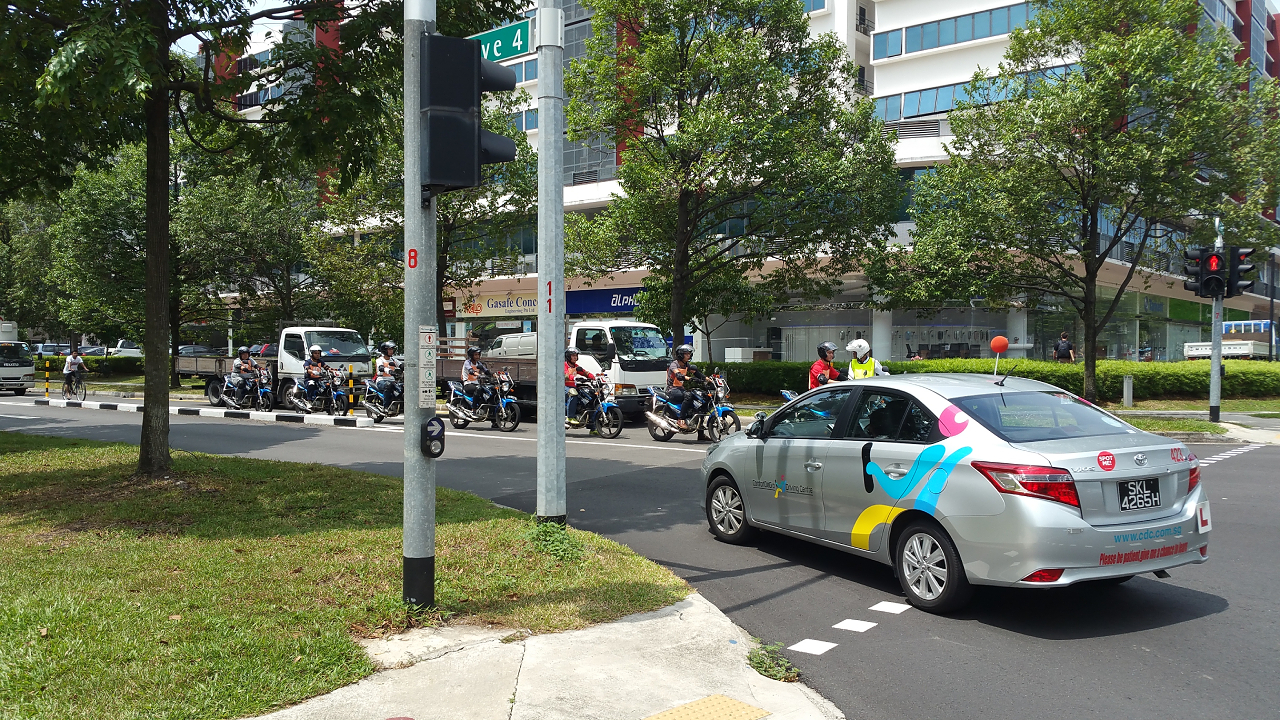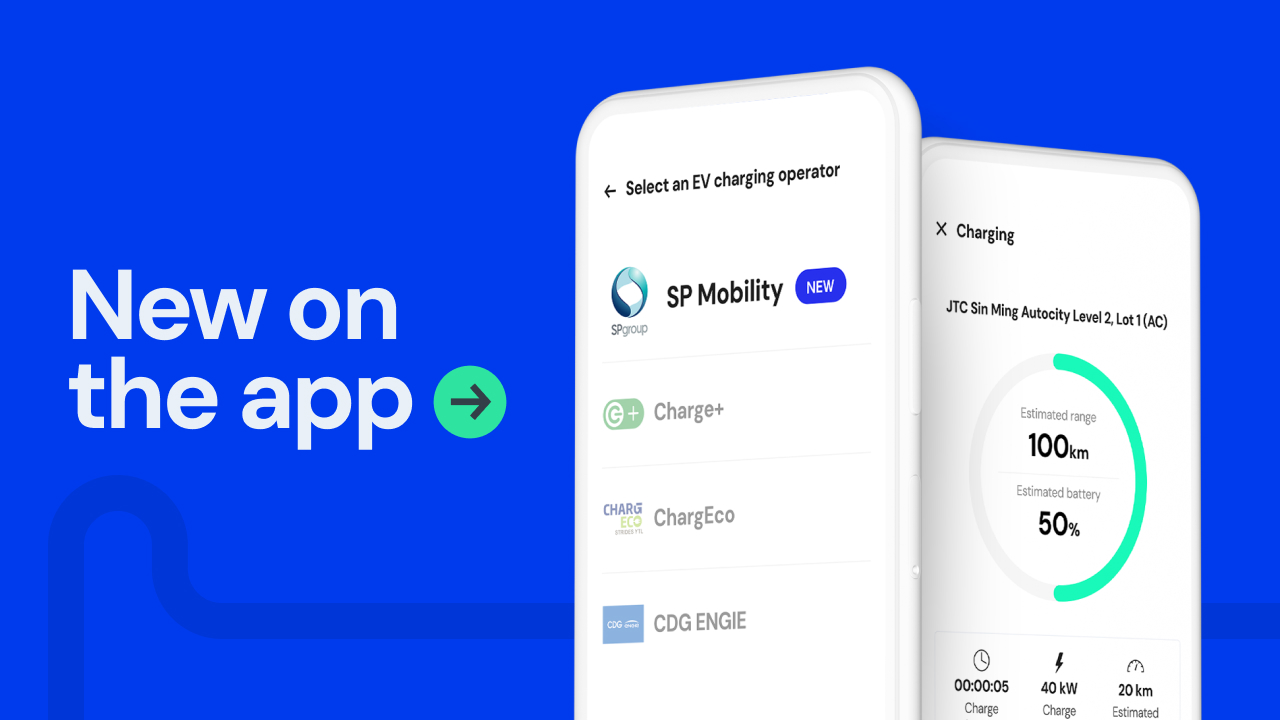Hyundai IONIQ Electric in Singapore: Here’s our review of the electric vehicle (2022)
06/11/2022
7.4 min read

The Hyundai IONIQ Electric is a fully electric version of the popular Hyundai IONIQ Hybrid, utilising a lithium-ion polymer battery pack that’s rated for 38.3kWh. It has a drive range of more than 300km on a single full charge, as well as compatibility with DC fast charging.
Powered by a single electric motor, the IONIQ Electric boasts 295 Nm of torque and is quick off the line. Inside, the car is fitted with a solid range of features. They include wireless Apple CarPlay and Android Auto, a multi-function steering wheel with cruise control, variable regenerative braking settings, lane-keep assist, a wireless charging station, and even ventilated seats.

Exterior and Design
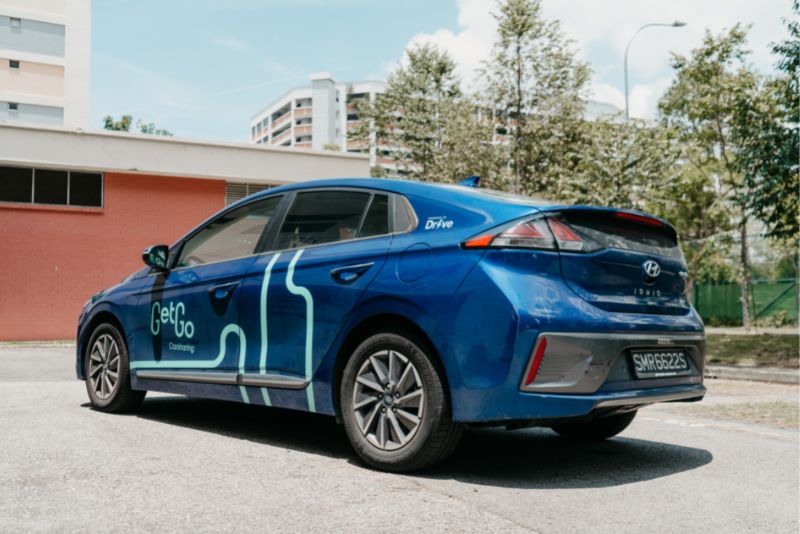
The Hyundai IONIQ Electric is a compact sedan with a liftback tailgate and is similar in size to cars like the Mazda 3 or Toyota Altis. In fact, it is based on the exact same chassis as the IONIQ Hybrid, with whom the IONIQ Electric shares its underpinnings. However, as a fully electric vehicle, the cabin floor in the second row is slightly flatter than its hybrid sibling which provides a little more legroom.
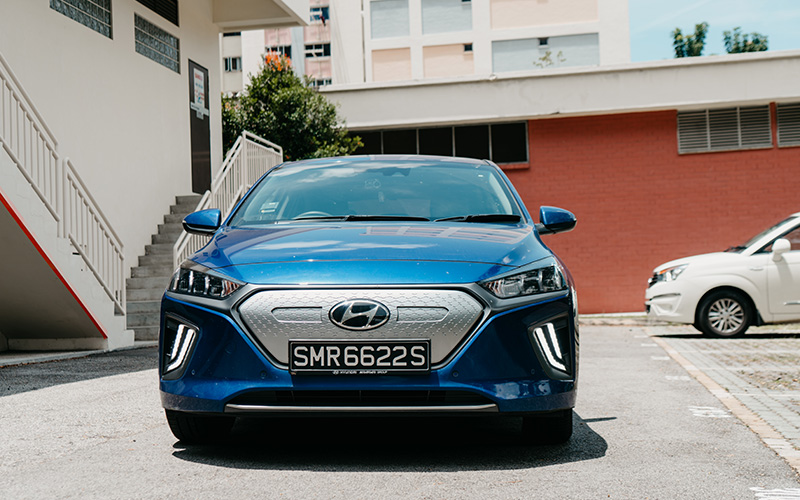
In terms of its overall footprint and silhouette, there are little differences between the electric and the hybrid. But the electric does feature a blanked out front grille, which is a clear indication of its electric powertrain, and is distinct enough to easily differentiate the hybrid and the electric from the front.
Another tell tale sign is the wheels on the IONIQ Electric — they feature a sportier spoked design as compared to the hybrid’s blade-like wheel design.
With a total length of just around 4.4m, the IONIQ is a very manageable car to drive, and will not infringe on any size limitations of any car parks in Singapore. As the car is also not too broad, newer drivers will also have a reasonably easy time manoeuvring around multi-storey car parks or other similar places.

Interior & Practicality
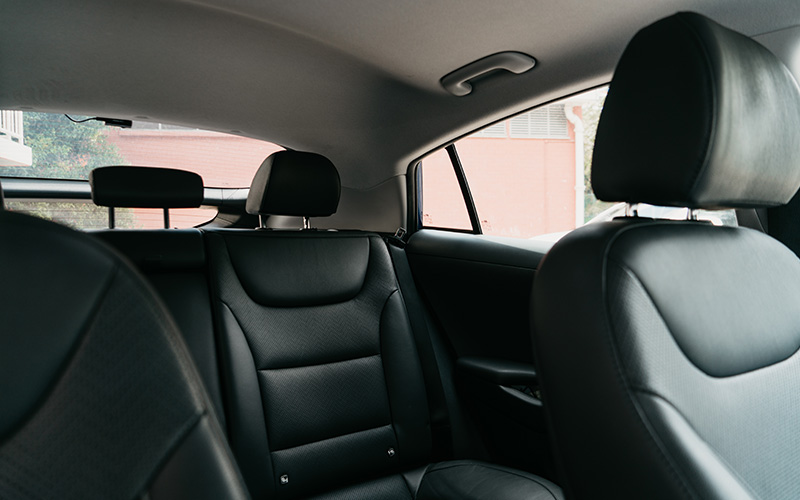
On the inside, the IONIQ Electric appears simple and utilitarian at first, but it soon becomes clear that the car has plenty of features that elevate it to a level above its key competitors.
For instance, it comes with an easy access feature that automatically pushes the seat back when you are getting in before moving back into driving position the moment you start the vehicle. Typically, you’d find such a feature on more premium continental makes and models, but in the IONIQ Electric, this is a standard feature.
Look around and you’ll find more premium features such as electric seat adjustment with memory seats, a wireless charging pad embedded into the centre console, as well as wireless Apple CarPlay and Android Auto.
This means that while driving along, you can easily hook your favourite Spotify playlist up via the infotainment unit, while simultaneously charging your phone in the wireless charging pad. This is one of the reasons why the IONIQ Electric is a perfect companion for longer distance drives or full-day family trips.

Speaking of family trips, the car also features a liftback boot lid, which when opened, reveals not only a 375-litre boot, but also a large and open boot aperture that’s perfect for loading larger objects like larger strollers, push bikes, or boxes — items that may be harder to fit through a regular sedan-style boot opening. If that’s not enough good news, the IONIQ Electric comes complete with knockdown rear seats for added space too.
Our personal favourite feature is the addition of ventilated seats, which is a godsend in Singapore’s epic heat and humidity. One of the things that drivers in Singapore have to regularly face is a hot leather seat after parking under the sun for a couple of hours.
With ventilated seats however, cool air wafts through the seat fabric to create a cool pocket of air between the warm seat surface and your warm body, helping both you and the car cool down a lot faster.
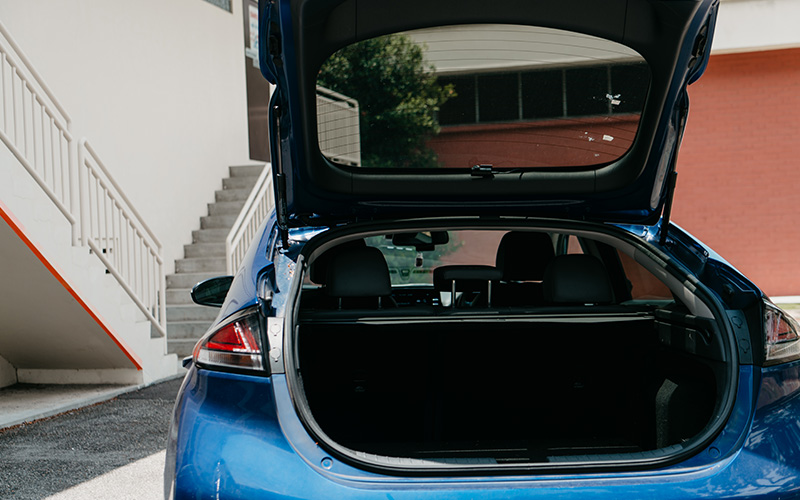
Driving & Technology
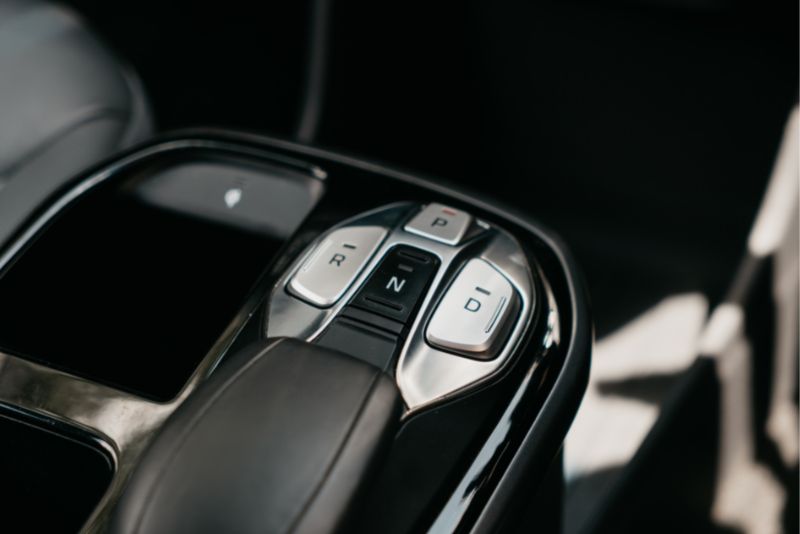
Once you’ve put the IONIQ Electric into drive with the quirky spaceship-looking digital gear selector located on the centre console, you’ll immediately realise that the car feels rather solid, and offers a completely different driving experience from its hybrid sibling. Power delivery is immediate and decisive, offering the driver plenty of torque to zip through city traffic or urban driving conditions.
To aid you through more challenging driving conditions, the car also comes with important safety features like proximity warning sensors and lane-keep assist — useful if you need help with judging space and distance. Safety information is clearly displayed through a full digital driver’s display, another feature that is perhaps more commonly seen in premium cars, but is standard on the IONIQ Electric.

Personally, one of the things about the IONIQ Electric that stood out was its ride quality and weight distribution. With the battery packs across the car floor creating a low and central centre of gravity, the weight distribution of the IONIQ Electric was excellent for its class, and in turn, provided good balance in the vehicle across uneven surfaces. This led to a much more comfortable drive, especially for the rear passengers.
The half-sized sunroof, when opened up, does also help to make the cabin a brighter and more spacious place to be in, and is particularly useful if you have younger kids to entertain on longer journeys, or if you’re thinking of creating a more romantic ambience during your date night drive.
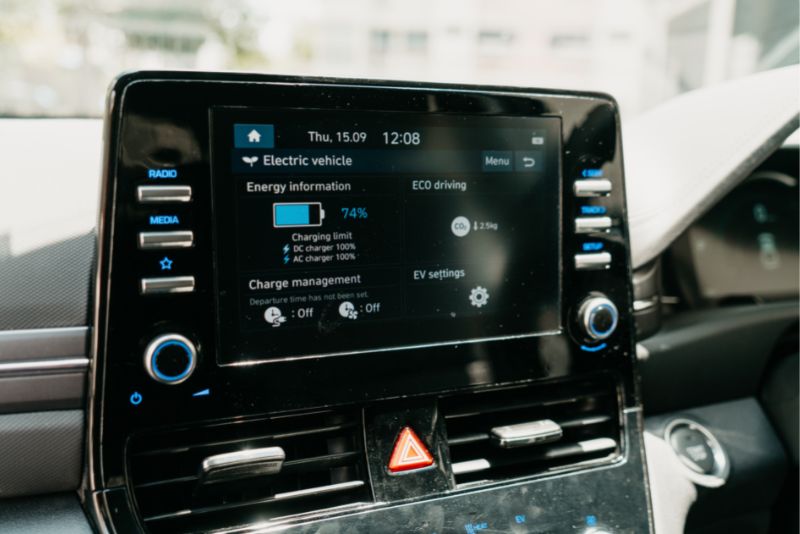
Braking regeneration rates in fully electric vehicles are often a discussion point, but in the IONIQ, this setup is easily adjustable by toggling the drive mode selector in the centre console.
In Eco mode, regenerative braking levels are higher by default, and slow the car significantly the moment you take your foot off the accelerator. In this setup, one-pedal driving is easier, although this is probably something that only experienced electric vehicle drivers should play with — as the braking distance and amount are something that every driver needs getting used to.
In Comfort mode, which is the regular setting between Eco and Sport, regenerative braking is decreased significantly, allowing the car to coast further and drive more naturally. Power is also more accessible in this mode and will allow for more spirited acceleration than in Eco mode.
That said, regenerative braking is still present to a small extent in Comfort mode and the engine braking sensation is still a little different from what you’d experience in a petrol-powered car.
Last but not least, regenerative braking in Sport mode is at a minimum and it perhaps provides the closest experience to a regular petrol car. However, that’s about where the similarities end, as the power and torque offered in Sport mode clearly and cleanly overshadows anything else you’ll experience in a petrol-powered compact sedan of the same segment.
With 295 Nm of torque on tap, slotting quickly into tight lane changes during peak-hour traffic will feel like a breeze, allowing the driver to accurately direct the car into a desired space.
Conclusion
Overall, the IONIQ Electric is a car that clearly punches above its weight, and offers a well-balanced drive. It’s aided by good weight distribution and a positive electric drivetrain.
Drivers who are big on features will also be pleased with the array of features that come standard on the IONIQ Electric, many of which are found only on more premium options on the market. Its manageable size and good use of space in the cabin make the IONIQ Electric a great choice for longer excursions that take you through a mix of urban and highway driving conditions.
Download GetGo now to rent the Hyundai IONIQ Electric within minutes. With GetGo, you no longer have to worry about the financial commitments that come with car ownership. Just pay for what you use — with no deposit or membership fees required. Find a car for your every need, with over 36 models in our fleet.
Read our quick guide to learn more on how to get started.
Enjoyed reading about the Hyundai IONIQ Electric? Check out more car reviews like this:
Trending articles
What's New

loop on our
latest updates,
promos, and weekly news.
The GetGo Blog
Get our latest updates,
promotions and weekly news.




